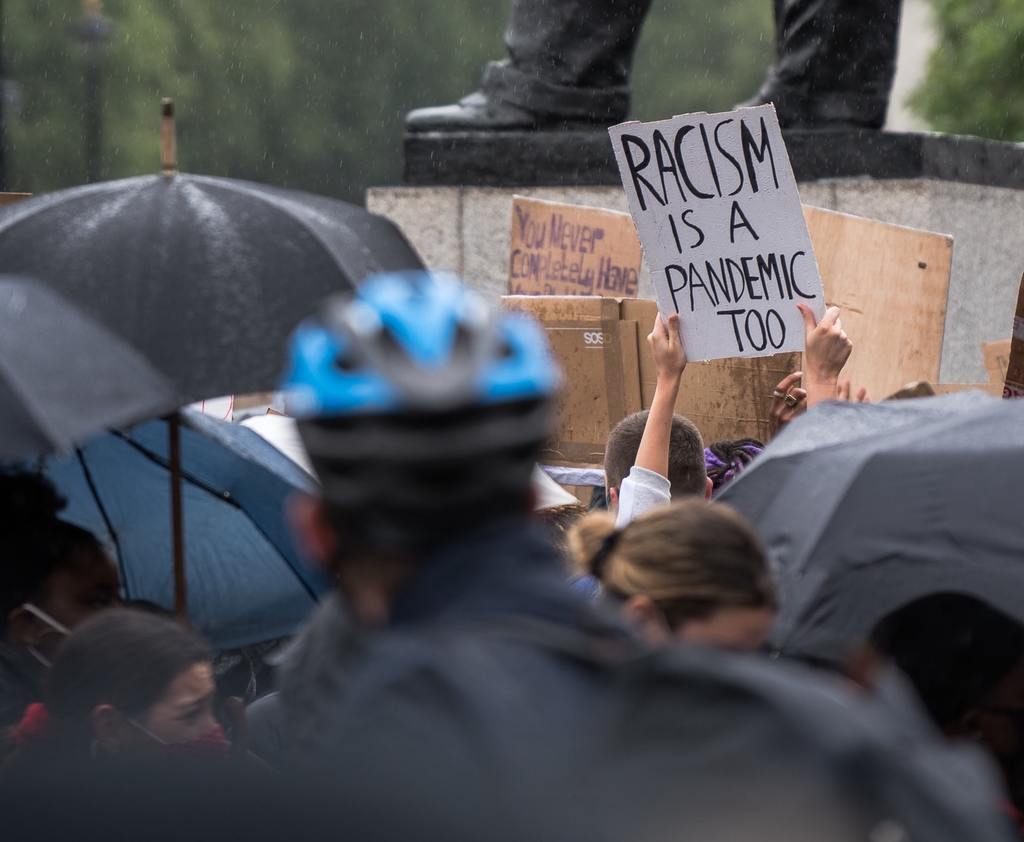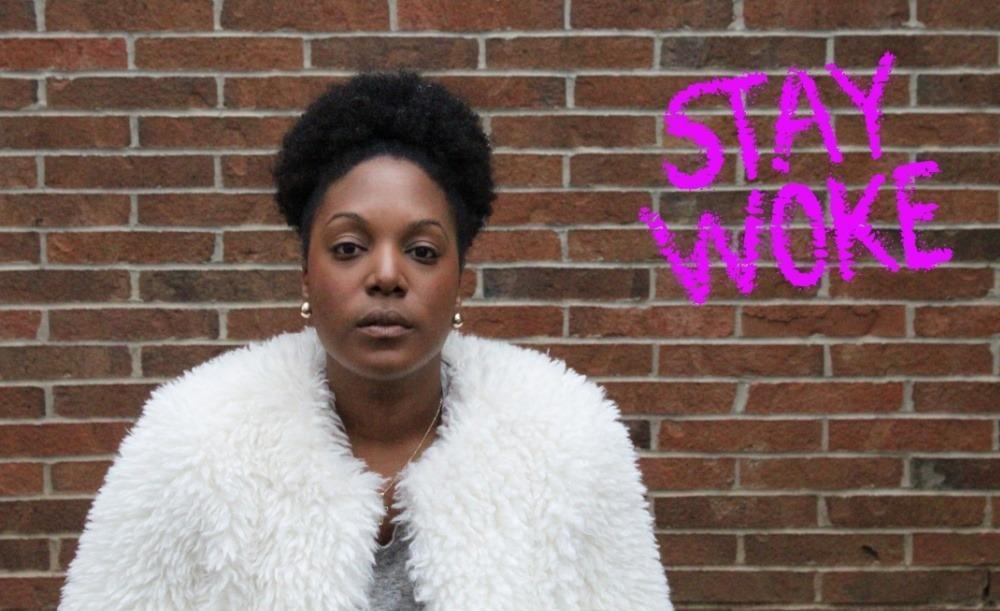Action Beyond Division By Joseph Martin Stevenson

AR+ friend Joseph Martin Stevenson of Madison, Mississippi finds that when it comes to race, most people do not know what they do not know. He asks us to consider how everyday symbols – from math! – can help empower, enlighten, and engage us on our journey with racial justice. I appreciate his alchemical suggestion – he calls it “crosscrossing” as a cognitive emotional response to the neutrality of math. He invites us to bring math mind to action research. For too long they have been divided.
“The intuitive mind is a sacred gift, and the rational mind is a faithful servant. We have created a society that honors the servant and has forgotten the gift.” –Albert Einstein
Joseph continues “Mathematical symbols have the remarkable quality of remaining constant, and neutral; they they mean the same throughout our lives. How can this quality be useful for understanding social injustice? Can we leverage these symbolic colophons, ideograms, and hieroglyphs for comprehending the complexities, complications, and convolutions surrounding race, race relations, racism, and reconciliation in America?”
To track with Joseph, I (Hilary) think about when I talk-teach-write about power. I often contrast a triangle – representing our inherited feudal forms of organization – with a circle, to suggest more equality in organizing. And I’ll pose the question: what actions we can take to move us from triangle to circle? In Joseph’s terms, this is also as math problem. The answer lies in making room around us, so the triangle opens out increasingly to a circle.
How does this apply to social justice in health disparity, asks Joseph. What actions must we – individually and collectively – take “to circle the triangle”? As we contextualize the impact of COVID-19, how can equal treatment be applied? What does it mean for the entire population to be treated equally when communities of color are more pressed by COVID? In simplest terms, those of us who are mindlessly pressing to the front of the line need to make space, need to step aside and leave room for communities of color who are more hardpressed. This is not the case today. Hopefully more of us can be aware of this.
Joseph continues: My commentary for AR+News is in recognition of Black History Month in America. While this month focuses on the celebration of the history and heritage of African Americans, my commentary calls for attention to symbols in society that can empower our understanding of race within its larger context. I do this at a time when we’re become increasingly “divided.”
Consider that division, like other words in mathematic computation, requires action. And as we know action provides the thematic thread throughout action researching. So, for the readers of AR+News, I ask that we “see” and think about what actions can be taken by ourselves and with others, for social justice. I invite you to leverage, in particular, the meaning behind universally recognizable symbols of math. We underestimate the power of symbols.
None of us may be considered chosen over others
I have an end in mind. In the final analysis of our everyday interactions of visual symbols, mindful optics, messaged imagery, and ordinary routine thought processes, especially about social justice, we should move closer to embodying the insight that none of us can be considered chosen over others. None of us should think we are either more/less important or more/less worthy than others. None of us should think we are better, brighter, more beloved, or more blessed than others, or vice versa. We are all blessed. Therefore social justice must be “seen” as finding the balance between either and or.
Consider the universal language of mathematics
In all our socially divisive chaos, orchestrated confusion, and continued complexity about race, is now time to start having dialogue about more foundational truth? With the utility of mindful vetting, purposeful verification, and evidenced-based validation it’s possible to prevent widespread, explosive, and increasing misunderstanding.
Using words and language, which is the manifestation of the term “trivium” in the liberal arts of higher education ecology and ethos, has been challenging for many of us when discussing inequities embedded, grounded and hidden within the combined forces of today’s coronavirus pandemic and disconcerting race relations.
Integrating subjectivity with objectivity
In recent months, many have felt challenged by certain words and expressions related to race. We may feel the sense of heightened anxiety, unaddressed ambiguity, intensifying anguish, growing angst, oscillating ambivalence and, even, underlying anger. There is a range of human emotions. Pronounced inner feelings are becoming more and more challenging.
This new amplification, moreover, is happening amid COVID 19. Words like inequality, disparity, justice, prejudice, and Black Lives Matter. Since all of these terms have multiple meanings perhaps we can leverage the “quadrivium” of the historical seven liberal arts — arithmetic — to bring clarity.
When teaching college students, I refer to “crisscrossing” – a way of working within the liberal arts, where the quadrivium meets the trivium. It’s the nexus of finding truth that integrates the human brain.
The language of liberal arts is important. As my colleague, C. Liegh McInnis, points out “we are not just debating history and ideologies; we are debating what words mean so your approach is necessary so that people can be forced to think more thoroughly about their ideas, their ideals, and the gap that exists between our ideals and how we behave. This is, of course, one of the things that Plato is debating in Republic and to what Aristotle is responding in Poetics. Therefore, after this solid foundation, you have enough to expand it into a full treaty of an empirical process of arriving at a more perfect union”.
Could it be that we can find, express, and deepen understanding of truth with cross-crossed translations between words and numbers? Is it possible that we could create algorithmic “actions” to address inequities, disparities, and injustice?
I am suggesting that we leverage the quadrivium, which is about the use of words, and the trivium, which is about the use of mathematics, to help us understand the power of words and the power of math in our everyday language. Father Hardin, a mentor, would be proud:
“Liberal arts, understood properly and done sensitively, can be a transformational experience”. ~Rev. Fr. Boniface Hardin, Founder and President, Martin University
What I am proposing is a simple, yet complex. The purpose here to start conversations about balanced revelation of thought, expression, interaction, and mindfulness.
Let us consider the math symbol equal to “=” which comes up a lot in our thinking, speaking and writing. It reminds us that we may have to seriously re-examine and respond to social injustice that is pervasive, permeating, and prevalent just about everywhere in America. At the heart of that is how are we equal to one another.
Let us address the ÷ symbol (division). Just as we take from one domain and give to the other in mathematical division, we can also address and react to social injustice, divisively or with a mind to amplify and add value.
The + symbol (addition or positive) is central to the type of thinking I must embrace for comprehending the bigger picture, the larger context, and the greater good.
The “-“ symbol, meaning either subtraction or negative is sometimes referred to when describing populations in our society who are marginalized, devalued, voiceless, or experience inequity.
The symbol < means “less than”. This mathematical symbol can be applied when we make reference to certain populations as underutilized, unrepresented, under-resourced, under-served, or underprivileged; whereas the symbol > meaning “greater than” could be applied when referencing comparisons (particularly amid COVID 19) in health disparity, employment disparity, criminal justice disparity, economic disparity, or workforce disparity where some populations are clearly advantaged — from data and documentation– over others.
The symbol x in mathematics or arithmetic means multiplication. This symbol can describe the overwhelming need for the levels, layers and lifts we will have to advance in order for this country’s seemingly marginalized and indigenous people to reach for future greatness, especially those populations who are listed above.
One last symbol for this commentary is “pi,” which is commonly interpreted as “squaring the circle.” Could this be something between either and or?
Exegesis and elucidation can happen when we bring these everyday symbols to interpret, contrast, and explicate concepts such as liberty, rights, privilege, entitlement, prerogative, advantage, power, authority, license, claim, immunities, consent, indemnity, carte blanche, sanction, exemption, dispensation, or my favorite, “due.” In the context of universal mathematic symbols, what do these words mean? What is each of us on God’s planet earth “due”? Why? When? Where? Who is not due? Where are we adding the positive, dividing and equalizing?
It may be that most of us spend too much time in life trying to square the circle of others, but it does not mean we should stop trying to empathize with others and face our past prejudicial biases, our present subtle subjectivity, and our future potential divisive influences. In fact, all of us must work on bringing the distance between the lined squares and circles of our human divisiveness as symbolized above and below.
Now to action
My wife (Karen Wilson Stevenson) and I wrote a book years ago called, THEORRY, which stands for “The Higher Education of Research and Resource Yield.”
In this book, we challenge college students and faculty to “think-things-through-thoroughly-throughout.” In the same spirit, it would be quite interesting, informative, insightful and, perhaps, inspiring to– individually and collectively – define the symbols for “approximate equal to”, “less than or equal to”, “greater than or equal to” and “not equal to.”
All information has inaccuracies. That is why vetting, verifying, and validating is so very, very important. In fact, I advocate that “factual knowledge” and critical skills should be taught to every entering student at all American colleges so they can, as Harry G. Frankfurt suggests (with tongue and cheek), know what to avoid:
“People are flummoxed when it comes to figuring out many of today’s political leaders primarily because their noxious zeal is coming across as nincompoop full of myopic baloney aimed at brouhahaing, flimflamming, thwarting, and bamboozling those who are not paying close enough attention. Folks need to stand clear of the pneumatic effluvium and pay attention to facts, science, empirical data, and — most importantly – truth”.
Blog post by Joseph Martin Stevenson of Madison, Mississippi who is a distinguished scholar and a former Provost at Jackson State and Mississippi Valley State Universities. He has also served as a provost of other colleges and universities in New York City, Southern and Northern California, Daytona Beach, Florida, and Washington, D.C. He is presently the Provost of the Global Digital Academy with Class2Class.com in Silicon Valley.

- Three stories we did not tell about NGO-Community Collaboration in Uganda - April 18, 2024
- Podcast on PAR Peacebuilding in Colombia - April 15, 2024
- Julian Hauer’s Workshop– thinking wider and deeper - April 15, 2024
